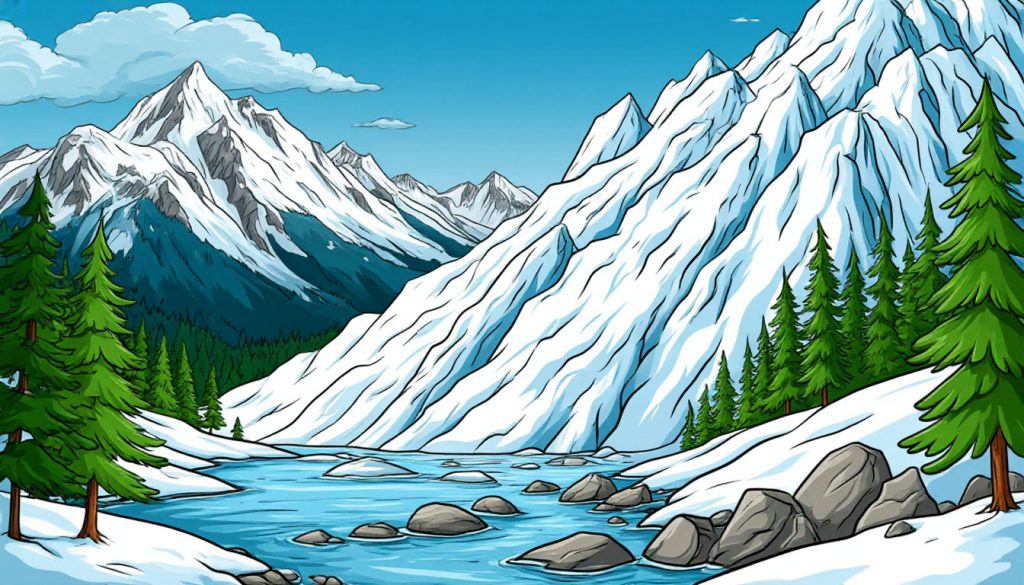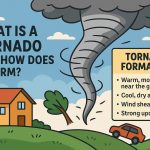An avalanche is a sudden, rapid flow of snow down a mountain slope, often triggered naturally or by human activity. While breathtaking in power, avalanches are extremely dangerous and can destroy everything in their path within seconds. Understanding how they occur and how to respond can help save lives in mountainous and snowy regions.
What Is an Avalanche?
An avalanche is a mass of snow, ice, and debris that slides down a slope due to gravity. Avalanches can vary in size — from small slides that affect only a narrow area to massive walls of snow that sweep across entire valleys. Some avalanches move slowly, but others can reach speeds of over 300 km/h (186 mph).
Avalanches are most common in areas with steep terrain, heavy snowfall, and changing weather conditions, such as the Alps, the Rockies, the Himalayas, and parts of Scandinavia and Japan.
How Do Avalanches Form?
Several key conditions contribute to avalanche formation:
- Snow layering: When layers of snow with different temperatures, moisture levels, or densities stack unevenly, the top layer may become unstable.
- Slopes: Most avalanches occur on slopes between 30° and 45°. Too steep, and snow slides continuously; too shallow, and snow usually stays in place.
- Weather changes: Sudden warming, rain, or heavy snowfall can weaken the snowpack.
- Triggers: Natural events like falling ice or earthquakes, or human actions like skiing, hiking, or snowmobiling, can start an avalanche.
There are different types of avalanches:
- Slab avalanche: A solid sheet of snow breaks and slides (most deadly).
- Loose snow avalanche: Starts at a single point and fans outward.
- Wet avalanche: Involves water-saturated snow, usually slower but heavy and destructive.
The Dangers of Avalanches
Avalanches are deadly because of their speed, mass, and unpredictability. Victims can:
- Be buried under meters of snow.
- Suffocate from lack of oxygen.
- Be injured or killed by hitting rocks and trees.
- Be swept into dangerous terrain like cliffs or rivers.
Survival chances drop dramatically after 15 minutes under snow, making rapid rescue crucial.
How to Stay Safe in Avalanche-Prone Areas
- Check avalanche forecasts before venturing into snowy mountains.
- Take an avalanche safety course if skiing, snowboarding, or hiking in backcountry areas.
- Carry safety equipment: transceiver, probe, shovel, and airbag backpack.
- Travel smart: Stay in groups, spread out when crossing risky areas, and never stop in avalanche paths.
- Know the signs: recent avalanches, cracking snow, “whumpfing” sounds, or rapid temperature changes are warnings.
Preparedness, knowledge, and awareness are key to minimizing risk.
Glossary
- Avalanche — A large mass of snow sliding rapidly down a mountainside.
- Slab — A cohesive block of snow that breaks off and triggers an avalanche.
- Snowpack — Layers of accumulated snow on the ground.
- Transceiver — A device used to locate buried people during avalanche rescue.


